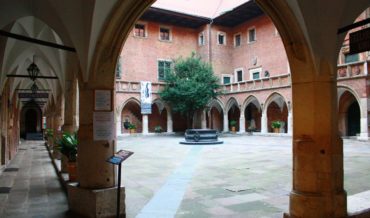Contents
Key Facts
- First Minister of Health in reborn Poland (1919)
- Chief City Physician of Krakow (1909-1919)
- Founded Poland's first dental outpatient clinic for children
- Established tuberculosis sanatorium in Prądnik, Krakow
- Created the institution of school doctor in Poland
- Founded the State Institute of Hygiene
- Built first city hospital in Zakopane (1896)
- Professor at both Jagiellonian University and University of Warsaw
- Imprisoned in Butyrki prison for political activities against Russian rule
- Born in Warsaw (1867), died in Brok on the Bug River (1939)
Early Life and Education
Janiszewski Tomasz Wiktor was a doctor, hygienist, social activist, professor at the Jagiellonian University and the University of Warsaw, as well as the first minister of health in reborn Poland. He was born in 1867 in Warsaw during the period of Polish partitions when Poland was divided between the Russian, Prussian, and Austrian empires.
From 1886 he studied medicine in Warsaw, and later continued his medical education in Moscow. However, his academic journey was interrupted due to his patriotic convictions and opposition to Russian rule. He was arrested and imprisoned in Butyrki – one of Moscow's most notorious prisons – for his political activities supporting Polish independence. Butyrki prison was known throughout the Russian Empire for housing political prisoners and revolutionaries.
After several weeks of imprisonment, he was released, but the Russian authorities denied him the right to study at any university in Russia as punishment for his anti-tsarist activities. This educational ban, while challenging, ultimately proved beneficial for his professional development. Determined to complete his medical education, he traveled to Western European countries, where he studied at prestigious medical institutions. This exposure to advanced Western medical practices and hygiene standards would later prove instrumental in his pioneering work in Polish healthcare.
Academic Career in Krakow
Early Years at Jagiellonian University
In 1894 he arrived in Krakow, which at the time was part of Austrian Galicia and offered considerably more academic freedom than Russian-controlled territories. He became an assistant at the Department of Pathological Anatomy of the Jagiellonian University, one of Europe's oldest universities with a distinguished medical faculty. The Department of Pathological Anatomy was particularly renowned for its research methods and modern approach to medical education.
His dedication and exceptional scholarly abilities quickly became evident. In 1896, he received a doctoral degree in medical sciences, demonstrating his mastery across multiple medical disciplines. This achievement was particularly significant given his interrupted earlier studies and the challenges he had faced under the Russian educational system.
Pioneer Work in Zakopane
Following his doctoral success, in 1896 he became a clinical doctor in Zakopane, the mountain resort town that was becoming Poland's premier destination for treating tuberculosis and other respiratory ailments. The high-altitude location and clean mountain air made Zakopane an ideal location for medical treatment, but the town lacked adequate medical infrastructure.
Recognizing this critical need, Janiszewski founded the first city hospital in Zakopane, establishing a modern medical facility that served both local residents and the growing number of patients seeking treatment in the mountain climate. This hospital became a model for mountain medical care and significantly improved healthcare accessibility in the Tatra region.
Revolutionary Work as Krakow's Chief City Physician
Appointment and Initial Reforms
In 1909, he became the chief city physician of Krakow, a position that enabled him to implement his progressive vision for public health on a city-wide scale. At the time, Krakow faced numerous public health challenges typical of early 20th-century European cities, including poor sanitation, widespread infectious diseases, inadequate sewage systems, and limited medical care for children and economically disadvantaged populations.
Janiszewski immediately began modernizing Krakow's healthcare system with unprecedented systematic approach. His methodology was comprehensive, addressing not only treatment but also prevention, health education, and public health infrastructure development – concepts that were considered innovative in Central Europe at that time.
Groundbreaking Healthcare Innovations
One of his most significant achievements was organizing the first dental outpatient clinic for children in Poland. This pioneering initiative addressed the widespread problem of childhood dental diseases and established the principle that preventive dental care should be accessible to all children, regardless of their families' economic circumstances. The clinic became a model for pediatric dental care that was subsequently replicated throughout the country and influenced similar programs in other Central European nations.
He also created the institution of school doctor, an innovative concept that placed qualified medical professionals directly in educational settings. This system ensured that children's health was monitored regularly, infectious diseases were detected early, and health education became an integral component of the educational process. The school doctor program significantly reduced childhood mortality and morbidity rates in Krakow, making it one of the first European cities to implement systematic school health services.
Public Health Infrastructure Development
Understanding that effective healthcare required robust infrastructure, Janiszewski established disinfection and sterilization facilities throughout the city. These facilities were essential for controlling infectious disease outbreaks and maintaining public hygiene standards. The disinfection centers represented a scientific approach to disease prevention that was particularly advanced for Eastern European standards of that era, drawing on principles he had learned during his studies in Western Europe.
The Prądnik Tuberculosis Sanatorium
Perhaps his most ambitious and impactful project was the construction of a tuberculosis sanatorium in Prądnik (now a district of Krakow). Tuberculosis was one of the leading causes of death in early 20th-century Europe, with mortality rates reaching 150-200 deaths per 100,000 people in urban areas. Janiszewski recognized that specialized treatment facilities were essential for combating this epidemic.
The Prądnik sanatorium was designed according to the most modern principles of tuberculosis treatment available at that time, incorporating fresh air therapy, regulated nutrition, graduated physical exercise, and continuous medical supervision. The facility gained recognition throughout Central Europe for its innovative treatment methods and notably higher recovery rates compared to traditional hospital care. The sanatorium not only saved thousands of lives but also advanced medical understanding of tuberculosis treatment and established protocols that influenced sanatorium design across the region.
National Leadership: Poland's First Health Minister
Appointment to National Government
When Poland regained independence in 1918 after 123 years of partition, the newly restored nation faced enormous challenges in building modern state institutions from scratch. The country had inherited three different administrative systems, varied healthcare standards, and needed to establish unified national policies. In 1919, Janiszewski was appointed the first Minister of Public Health, making him the first person to hold this crucial position in reborn Poland. His appointment reflected both his exceptional qualifications and his established reputation as a healthcare reformer with practical administrative experience.
Founding the State Institute of Hygiene
As minister, one of his most consequential achievements was founding the State Institute of Hygiene. This institution became the cornerstone of Poland's unified public health system, responsible for disease surveillance, epidemiological research, vaccine production, and the development of evidence-based public health policies. The Institute played a crucial role in standardizing medical practices across the country's formerly partitioned territories and ensuring that scientific principles guided national health policy decisions. This centralized approach was particularly important for a country that needed to integrate diverse medical traditions and standards inherited from three different imperial systems.
Educational Health Reforms
Janiszewski also introduced mandatory medical examinations for all new university students. This requirement ensured that higher education institutions maintained health standards and that potential health issues were identified and addressed early. The policy also helped prevent the spread of infectious diseases in crowded university environments and promoted the concept of preventive healthcare among Poland's future educated classes. This systematic approach to student health became a model for other European countries rebuilding after World War I.
Legacy and Commemoration
Lasting Impact on Polish Healthcare
Janiszewski's influence on Polish healthcare extended far beyond his official positions and continued well into the mid-20th century. His emphasis on prevention, public health education, and universal healthcare access established foundational principles that guided Polish medical policy for decades. Many of the institutions he founded continued to operate and expand long after his tenure, serving as the structural foundation for Poland's modern healthcare system. His integration of clinical medicine with public health administration became a distinctive characteristic of the Polish healthcare model.
Physical Memorialization in Krakow
Today, on the building of the Hospital of John Paul II, located at the site where his tuberculosis sanatorium once operated, there is a commemorative plaque dedicated to his memory. This plaque serves as recognition of his pioneering work in tuberculosis treatment and his broader contributions to healthcare in Krakow and Poland.
The transformation of this site from Janiszewski's tuberculosis sanatorium to a modern hospital named after John Paul II represents the continuity of medical innovation and care in Krakow, spanning from the early 20th century to the present day and symbolizing the evolution of Polish healthcare.
Final Years and Death
Janiszewski continued his medical and academic work until late in life, maintaining his commitment to healthcare advancement and medical education. He died in 1939 in Brok on the Bug River, at the age of 72, just as World War II was beginning to devastate Poland. His death marked the end of an era in Polish medicine, but his institutional legacy and innovative approaches to public health continued to influence Polish healthcare throughout the challenging war years and into the post-war reconstruction period.
Historical Significance and European Context
Tomasz Wiktor Janiszewski represents a crucial bridge between 19th-century clinical medicine and modern public health administration. His career spanned the final decades of Polish partition, the restoration of independence, and the early years of the Second Polish Republic. Through his integration of clinical expertise, administrative innovation, and social reform vision, he helped establish the institutional foundations of modern healthcare in Poland and specifically transformed Krakow into one of Europe's more progressive cities in terms of public health policy.
His professional trajectory also illustrates the international character of medical education and practice in his era, demonstrating how political persecution could ultimately lead to broader knowledge acquisition and more innovative approaches to healthcare challenges. From his imprisonment in Butyrki prison to his medical studies in Western Europe, from his pioneering work in the mountains of Zakopane to his national leadership in Warsaw, Janiszewski's career exemplifies the dedication and adaptability required to advance medical science and public health in a period of rapid social and political transformation.
In the broader European context, Janiszewski's work placed Poland at the forefront of several public health innovations, particularly in school health services and tuberculosis treatment, contributing to the country's reputation as a significant contributor to early 20th-century medical progress despite its challenging political circumstances.

